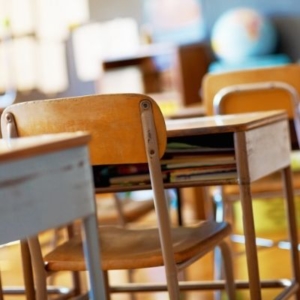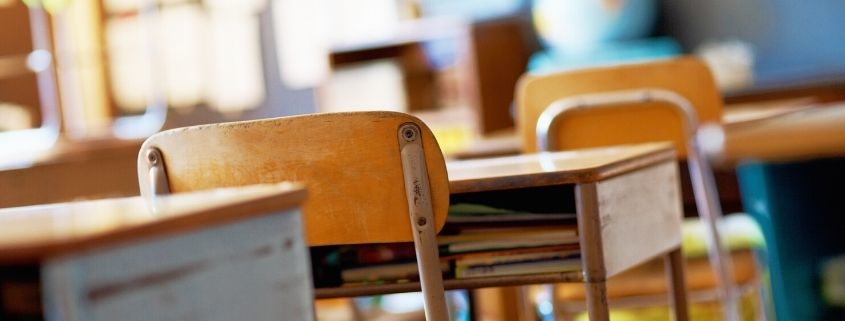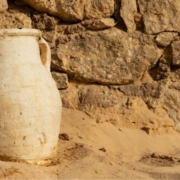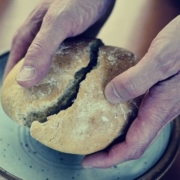Accompanying Students Amidst a Global Pandemic
BY ABBIE AMICO | March 24, 2020
The overwhelming feeling in the country right now is stress. As educators and ministers, the stress is twofold: we are managing our own emotional reaction to a pandemic while also caring for the students we serve. When considering the students, we know that their stress and anxiety may be overwhelming. Some may feel a larger financial burden as parents become unemployed or lose financial stability, some may have a challenging home life that is amplified by 24/7 social distancing, and others may be acting as caregivers for older grandparents or younger siblings. The reality is that you, the educator/campus minister/counselor, may be the only non-familial adult that currently has regularly scheduled time with a student. With this in mind, how do we practically offer ourselves as an additional support system? Below I offer a number of ways to use the time you already have with students as a sacred space for social, emotional, and spiritual accompaniment.
Let students feel (in your virtual classroom and beyond!)
We can be creative in the ways that we open up classroom time for holistic sharing and support. If you have a set meeting time with students every day, use some of that time to check in. You can call names one at a time and ask students to describe how they are coping with one word, or you can use the “thumb thermometer” and ask students on a scale of 1 (thumbs down) to 10 (thumbs up) how their time at home is going. By checking in with students, we are giving them a space where they are free to say that this is difficult, and they don’t have to feel “normal.” They may be struggling to tell their parents this truth, as many are likely trying to care for both themselves and their families, and these check-ins can remind them of the other outlets of support they have in their school and friends.
If you are a campus minister or hold a job where one of your daily duties is checking in with students, make the first move. Asking for help is difficult for adults, and that much more for adolescents who are struggling for autonomy and individuality. If you had weekly in-person meetings with students, ask if they can continue. If students used to pop in, send them “stop by” emails as a reminder that this can continue virtually. Email them with check-in questions, send funny memes, reach out to their parents to see how online learning is going, etc. We all want to feel cared for when we are anxious, and regular contact (even if students don’t respond with vigor) reminds students that you are a safe person to connect with and talk to as the weeks get harder.
Model self-care practices in your classroom
In the last week, I’ve seen a number of prayers, meditations, and free mindfulness apps circulate as teachers and counselors rush to create outlets for students who are in need of peace of mind. While these resources are important, it will be incredibly difficult for a student who does not have a daily practice of prayer/meditation to create a new routine in the middle of a pandemic.
 Instead, ask students what their “list of 5” is. What are five activities they can do when they begin to feel stressed or overwhelmed? Similarly, how can you share your list of 5 with your students? This is a way to model self-care without making it about the educator.
Instead, ask students what their “list of 5” is. What are five activities they can do when they begin to feel stressed or overwhelmed? Similarly, how can you share your list of 5 with your students? This is a way to model self-care without making it about the educator.
Then, after students have a list already established, you can use your classroom time to meditate and pray together, as they are already familiar with spending time in prayer within their school community. For example, you could create online CLC groups—groups of 3-4 students who facetime and pray together. Or, outside of the classroom, lean on the resources and clubs that already exist. For example, invite a drama club, scouting club, or art club, to virtual meetings for everyone in the group to get together to check in, pray, and continue the club.
Preach about the Good God (even when everything doesn’t feel good)
As an employee of a school run by the Sisters of Notre Dame de Namur, we are reminded every day that God is good, all the time, and all the time, God is good. As both myself and my students begin to recognize how far outside of our control this “new normal” is, there is a sense of peace in reminding myself that I am limited in my capability to manage this.
As my paraphrased serenity prayer for this pandemic states, I believe in a Good God who loves me and is proud of me for trying to address and normalize the realities I can, and for letting go of the challenges I cannot. This allows me the ability to rest at the end of each day, knowing that even if there is more to do, my accomplished work is enough.
One of the realities I can control is ensuring that the contact I have with students includes joy. Since online learning began I’ve received 15+ photos of dogs, cats, and lizards from students in our school community that I’m able to share out as our “pet of the day.” I’ve found tiktoks I can email out, I learned that a nursing student of color created hand sanitizer, and I attend musical practice on Microsoft Teams 3 times each week. If we were in school, we would be doing more than academics, and we should consider looking at online learning the same way. Even amidst the stress, there is joy to be found, as the Good God exists in all things.
Now, more than ever, students and staff are co-educators in academic systems. We are all learning how to do this together, and while we are all allowed moments of panic, there is a beauty and hopefulness in recognizing that the faculty, staff, and students in every building are in this as a family. We are all missing each other, we all wish we could be in school, and we wait in joyful hope, even when it is incredibly difficult, for the day when we get to rejoin each other in the classroom.
Abbie Amico lives in the Boston area and works as a guidance and social/emotional counselor at Notre Dame Cristo Rey High School in Lawrence, Massachusetts. Prior to accepting this position she attended Saint Louis University, where she studied theology, and Boston College, where she received her master’s degree in theology and social work.









Students – they are the future pillars of their families, communities, societies and the Planet. May they be blessed with good times as they prepare themselves for service of humanity.
Beautiful, powerful & articulate guide to keeping calm, sane, safe & connected in this unsettling pandemic. Thank you for this emotional support in these difficult days. I am so grateful to know that so many leaders and ordinary folks in our comm’ty are reaching out to the most vulnerable to help safeguard their well being.
Thanks for the thoughtfulness in this blog.
Teaching virtually is very relevant, specially for this pandemic.